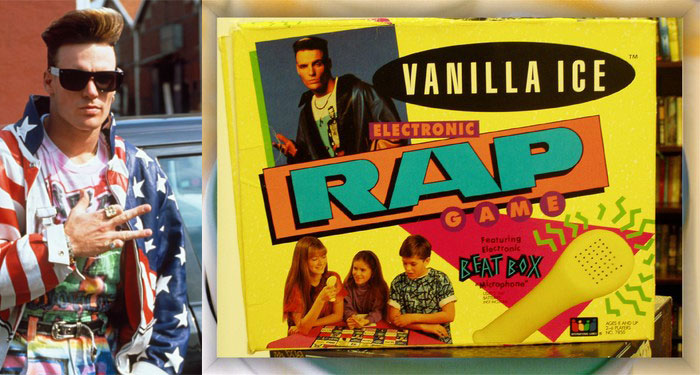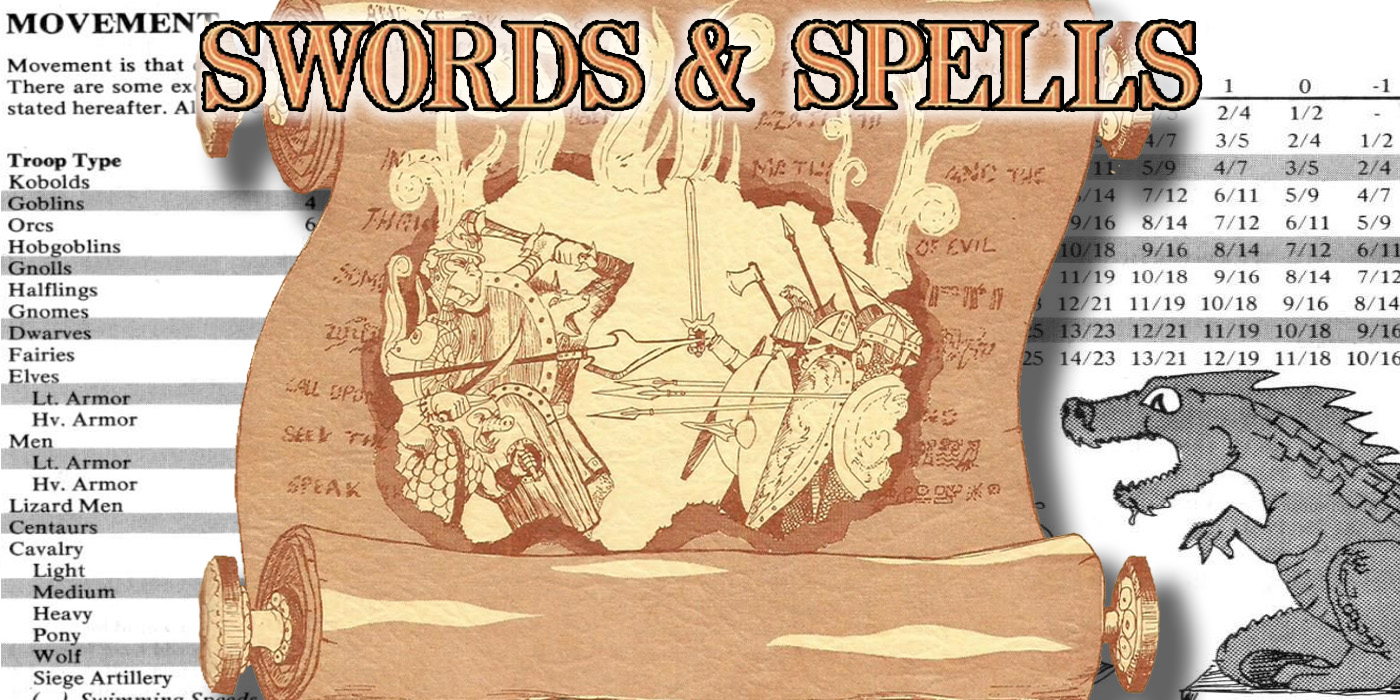’90s Board Games Were Weird, Chaotic, and Unoriginal. Let’s Rate Them!
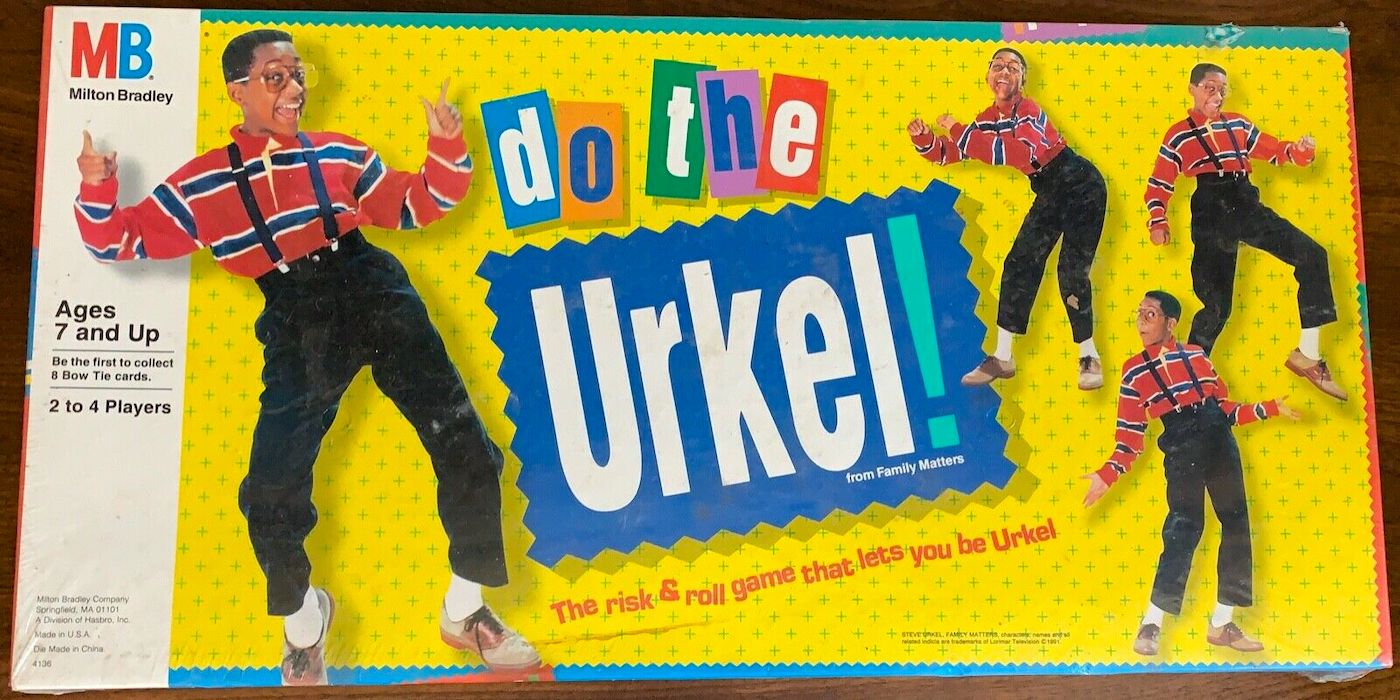

There has never been a more confusing and bewildering time than the 1990s. Were these ’90s board games phat or wack? Find out!
As anyone roughly my age will tell you, the ’90s were objectively the best decade. Anyone who disagrees is clearly buggin’ and straight trippin’. The ’90s were the bomb and hella tight. Mad props to my dawgs who still know that decade was all that and a bag of chips. But what’s the 4-1-1 on the board games from back then? Were they as dope as we remember? No DUH!
Many ’90s board games were incredibly innovative. They stretched the idea of what it meant to be a board game. Then, everyone else would just take their idea and copy it.
Today, we take a look at some old games and separate the phat (good games) from the wack (bad games).
Grape Escape – Mechanical Schadenfreude
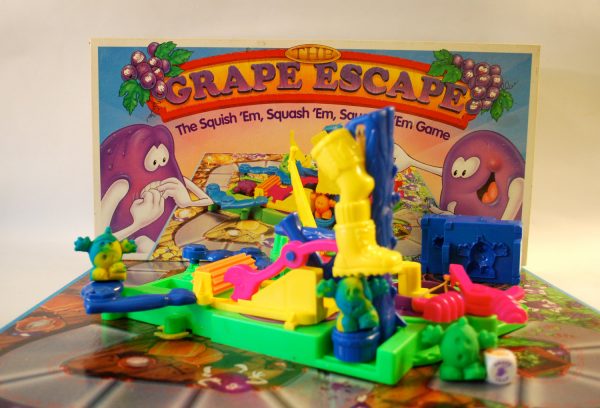
Basically the Same as Splat, Looney Tunes Smush ‘Em, Mouse Trap
Grape Escape was a dice-rolling, point-to-point movement game where players used molded clay figures as their game pieces. As they moved around the board, they would land on certain spots that could slice, push, mash, or mush their clay figure. If the die rolled ‘Crank’, the active player rotated a crank that operates the factory—destroying any hapless grapes in the wrong place at the wrong time.
Mouse Trap didn’t feature getting to destroy your opponent’s mouse, but that game was functionally the same: avoid the trap spaces and work some mechanical feature to ruin your opponent.
Whoever was running the Play-Doh lobby back in the ’90s was doing a great job. There were a lot of games that used Play-Doh figures. These games had you mangling your opponent’s piece to really drive the point home that they were losing. Gameplay-wise, not much going on. But despite anyone’s best empathic efforts, everyone delights in smashing an opponent’s piece into mush.
Rating: Phat
Don’t Wake Daddy – Jump Scare as a Game
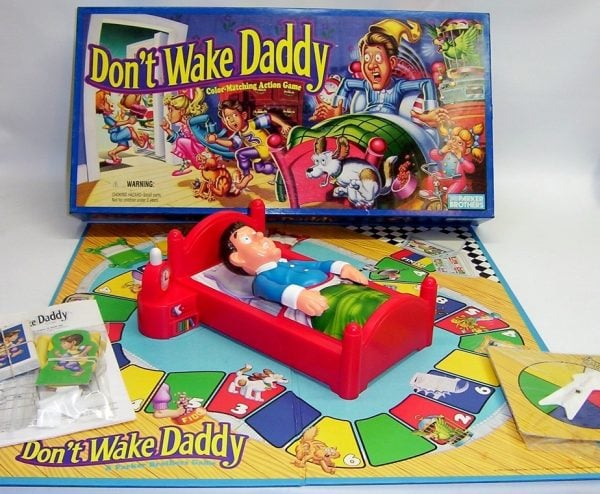
Basically the same as Crocodile Dentist, Perfection, Tyrannosaurus Rocks, Gooey Louie, Eat at Ralph’s
Don’t Wake Daddy is another dice-rolling, point-to-point movement game. Get ready to see a lot of them. As players move around the board, they’ll occasionally be required to hit the snooze button on Daddy’s alarm clock.
After some random number of presses, Daddy snaps awake and scares the bejeezus out of everyone involved, even the innocent players. Like Grape Escape, Don’t Wake Daddy is not a good game. But it has the added bonus of jump scares, which nobody likes!
Don’t Wake Daddy was probably the most popular in a shockingly large group of jump scare ’90s board games. Don’t Wake Daddy and others all had this feature of waiting for the game to snap and jump and spring just the make you scream.
Rating: Wack
Shark Attack – Don’t Get Caught, Hit, Knocked, or Eaten
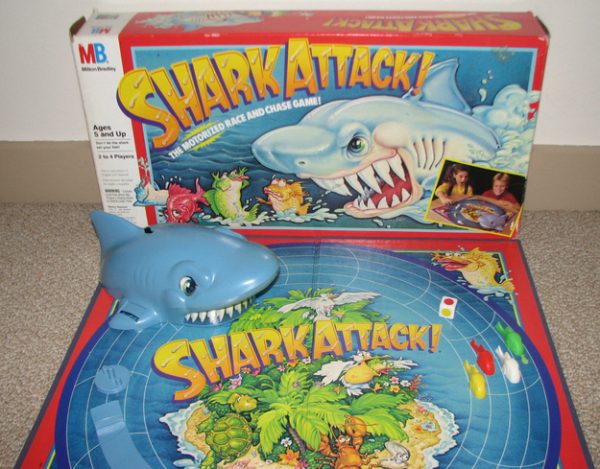
Basically the same as Dizzy Dizzy Dinosaur, Loopin’ Louie, Tornado Rex, Forbidden Bridge, Fireball Island
Shark Attack is, yet again, a dice-rolling, point-to-point movement game. Players rolled the die, and whichever player’s color got rolled, got to move forward. The game featured a shark that would lurch forward every few seconds. If the shark ate your fish, you were out. The last one un-eaten wins.
Shark Attack and its similar games all featured the same sort of gameplay. You’d move based on a die roll then the game would do something random and wacky. Then, if your piece got eaten, knocked off, hit, or whatever, you were out or sent back to start. They were frustrating, but I’ll admit I loved Forbidden Bridge a lot. The excitement of having your explorer just barely hanging on was thrilling. But it wasn’t worth the disappointment when they ultimately fell next turn.
Rating: Wack
KerPlunk – Don’t Let It Fall or Break
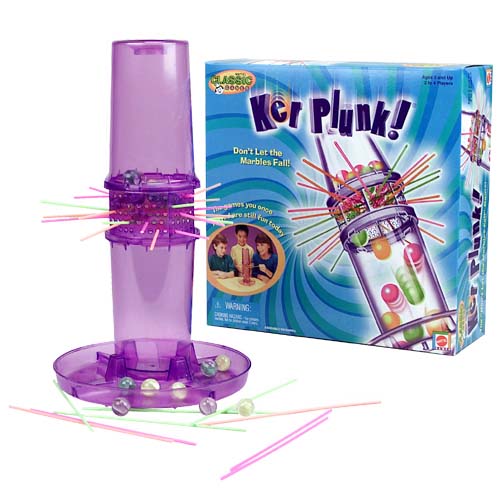
Basically the same as Don’t Break The Ice, Thin Ice, Stretch Out Sam, Rock Jocks, Jenga
KerPlunk is a dexterity game where players fill a tube with plastic skewers and then drop a bunch of marbles in the top. The skewers hold the marbles in place. With each turn, players remove a skewer, collecting any marbles that fall. The player with the fewest marbles at the end wins.
KerPlunk came out in the 60s, but it was still going strong into the ’90s and inspired many other ’90s board games to include some physics elements. These games relied on the player’s ability to balance something or keep something from breaking.
Ultimately, these games rely way too much on the chaotic nature of the universe—and I don’t mean dice rolls. There was too much left to physics. A stiff breeze could break the game, and any game that could be affected by Mom opening the front door is probably not a very good game.
Rating: Wack
Mall Madness – Electronics!
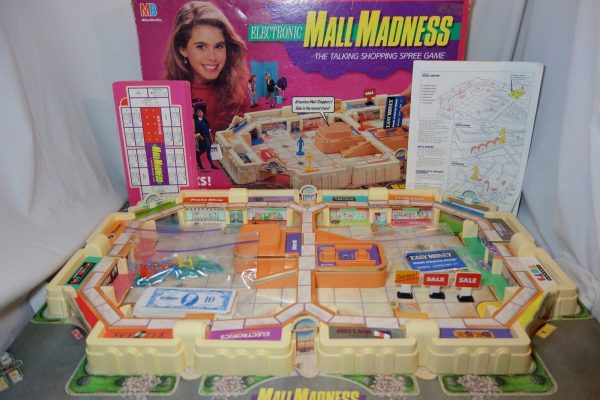
Basically the same as Dream Phone, Omega Virus
Mall Madness is a sort of dice rolling, sort of set collecting game that features an electronic game timer and arbiter of sorts. The main selling points were getting to buy as many clothes and jewelry as you wanted and the electronic device running the game.
One of the most impactful aspects of the 80s and 90s was the fact that electronics were getting dirt cheap. This meant that games could have electronic components without really ruining the cost of the game itself.
Whether or not you think games like Mall Madness might perpetuate stereotypical societal norms is not the point! The point here is the game was run by the computer. The computer was the entirety of the game’s functionality.
These games were fun because they were basically analog video games. If nothing else, the random component, as determined by the computer, allowed for some fair replayability.
Rating: Phat
Crossfire – Button Mashing: The Board Game
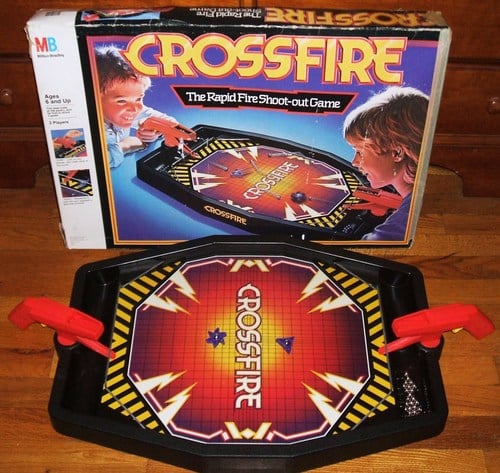
Basically the same as Hungry Hungry Hippos, Jumpin’ Monkeys
What list of ’90s board games would be complete without Crossfire? The commercial is so iconic at this point that everyone knows the theme song and the burning hellscape, which is required to play properly.
Crossfire required players to fire their blaster full of ball bearings to knock one of the two objects on the board into their opponent’s goal. It’s basically soccer with guns and two balls. Which should be super rad. But it’s not.
At the end of the day, Crossfire is just Hungry, Hungry Hippos with that 90s board game flair. You’re mashing your trigger as fast as you can and hoping for the best. Crossfire does give a little more to the game with needing to get the object in the goal.
But still, aside from needing to move slightly left or right sometimes, they are the same game. Sorry Crossfire, you’re just not a good game. Button mashing is not a good tactic.
Rating: Wack
Final Thoughts
So, most of these games were wack. But if I’m being real, even the phat games were still pretty wack. The ’90s did have lots of actually good games, but these were not them. Either way, if you can dig up a copy, I’m sure you’ll get a good sense of nostalgia. And if that’s enough to give you enjoyment in playing a game, then who am I to say they are wack?
Thanks for reading!

